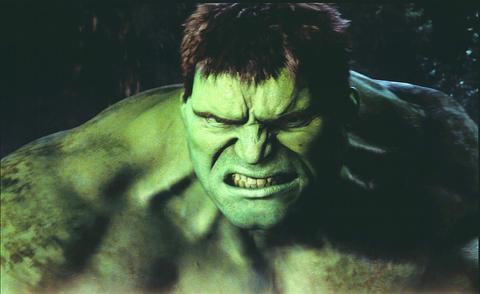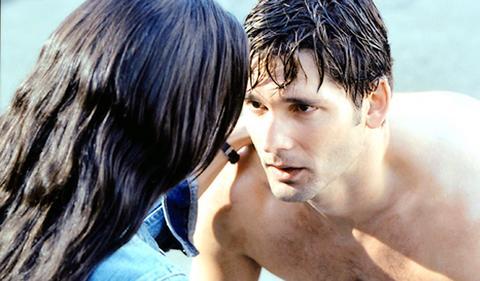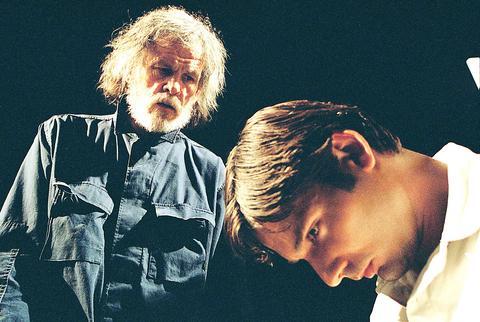If memory serves, the angry green Marvel Comics superhero who is the subject of Ang Lee's (
This is especially unfortunate because The Hulk arguably brings to comic-book material an arsenal of directorial and screenwriting intelligence unequaled since Tim Burton and Sam Hamm began the Batman franchise back in 1989. Lee and his frequent collaborator, the screenwriter and producer James Schamus, have an impressive and eclectic track record (including Eat Drink Man Woman, The Ice Storm and of course Crouching Tiger, Hidden Dragon). They deserve some credit for trying to push the musclebound superhero genre in new directions.
The problem is that they seem to be pushing it in about 10 different directions at once, and in the process they lose sight of the basic requirements of visual clarity, narrative momentum and emotional impact, without which this kind of thing quickly lapses into cultishness or mythomaniacal pretension. Like the raging Hulk himself, a computer-generated Gumby on steroids who comes into full daylight view only after what feels like a whole mini-series' worth of earnest exposition, the movie is bulky and inarticulate, leaving behind a trail of wreckage and incoherence.

PHOTO COURTESY OF UNIVERSAL
The first episode in any superhero franchise is burdened, and sometimes hobbled, by the matter of origins. The audience needs to be told what operations of accident, fate and Promethean technological hubris caused a given mild-mannered misfit to acquire his monstrous and misunderstood gifts. In this case the more the Hulk's background story is explored, the more obscure it becomes.
I'm far from an expert in such matters, but I would have thought that a combination of nanomeds and gamma radiation would be sufficient to make a nerdy researcher burst out of his clothes, turn green and start smashing things. I have now learned that this will occur only if there is a pre-existing genetic anomaly compounded by a history of parental abuse and repressed memories. This would be a fascinating paper in The New England Journal of Medicine, but it makes a supremely irritating -- and borderline nonsensical -- premise for a movie.
In disclosing its diagnosis, The Hulk begins with a flurry of oblique, overlapping scenes detailing the unhappy career of a scientist named David Banner, who was engaged in some kind of genetic research for the US military in the 1960's, and who quickly went crazy and did something terrible. (Exactly what will be revealed, at least partially, in one of many subsequent flashbacks.)

PHOTO COURTESY OF UNIVERSAL
Thirty years later David's son, Bruce (Eric Bana), having been reared by adoptive parents, has followed in his father's professional footsteps. Now a brilliant scientist in his own right, Bruce is haunted by nightmares and bedeviled by a smooth-talking corporate rival (Josh Lucas). Bruce's girlfriend, Betty (Jennifer Connelly), has broken up with him because he's too cut off from his own emotions.
As if this were not trouble enough, his crazy old dad shows up in the shaggy person of Nick Nolte, accompanied by three equally shaggy dogs, one of them a monstrous French poodle. The elder Banner either wants to reconcile with his son or to complete the experiment he began years earlier, before he was sacked by an irascible officer (Sam Elliott) who just happens to be Betty's father.
All of this takes a very long time to explain, usually in choked-up, half-whispered dialogue or by means of flashbacks inside flashbacks. Themes and emotions that should stand out in relief are muddied and cancel one another out, so that no central crisis or relationship emerges.

PHOTO COURTESY OF UNIVERSAL
Lee tries desperately to compensate for the flat-footedness of the story with a chaotic array of editing and camera tricks. Among his favorites are close-ups of eyeballs, which serve as literal and metaphorical mirrors, and screens that split into multiple panels. These moments -- and there are more and more of them as the movie flails into its middle section -- are perhaps intended to evoke the pages of a comic book, but in nearly every case the effect is to dilute the action rather than intensify it. When there is nothing very interesting to look at, shooting it from a lot of angles at once is not very helpful.

Oct. 27 to Nov. 2 Over a breakfast of soymilk and fried dough costing less than NT$400, seven officials and engineers agreed on a NT$400 million plan — unaware that it would mark the beginning of Taiwan’s semiconductor empire. It was a cold February morning in 1974. Gathered at the unassuming shop were Economics minister Sun Yun-hsuan (孫運璿), director-general of Transportation and Communications Kao Yu-shu (高玉樹), Industrial Technology Research Institute (ITRI) president Wang Chao-chen (王兆振), Telecommunications Laboratories director Kang Pao-huang (康寶煌), Executive Yuan secretary-general Fei Hua (費驊), director-general of Telecommunications Fang Hsien-chi (方賢齊) and Radio Corporation of America (RCA) Laboratories director Pan

The classic warmth of a good old-fashioned izakaya beckons you in, all cozy nooks and dark wood finishes, as tables order a third round and waiters sling tapas-sized bites and assorted — sometimes unidentifiable — skewered meats. But there’s a romantic hush about this Ximending (西門町) hotspot, with cocktails savored, plating elegant and never rushed and daters and diners lit by candlelight and chandelier. Each chair is mismatched and the assorted tables appear to be the fanciest picks from a nearby flea market. A naked sewing mannequin stands in a dimly lit corner, adorned with antique mirrors and draped foliage
The consensus on the Chinese Nationalist Party (KMT) chair race is that Cheng Li-wun (鄭麗文) ran a populist, ideological back-to-basics campaign and soundly defeated former Taipei mayor Hau Lung-bin (郝龍斌), the candidate backed by the big institutional players. Cheng tapped into a wave of popular enthusiasm within the KMT, while the institutional players’ get-out-the-vote abilities fell flat, suggesting their power has weakened significantly. Yet, a closer look at the race paints a more complicated picture, raising questions about some analysts’ conclusions, including my own. TURNOUT Here is a surprising statistic: Turnout was 130,678, or 39.46 percent of the 331,145 eligible party

The election of Cheng Li-wun (鄭麗文) as chair of the Chinese Nationalist Party (KMT) marked a triumphant return of pride in the “Chinese” in the party name. Cheng wants Taiwanese to be proud to call themselves Chinese again. The unambiguous winner was a return to the KMT ideology that formed in the early 2000s under then chairman Lien Chan (連戰) and president Ma Ying-jeou (馬英九) put into practice as far as he could, until ultimately thwarted by hundreds of thousands of protestors thronging the streets in what became known as the Sunflower movement in 2014. Cheng is an unambiguous Chinese ethnonationalist,